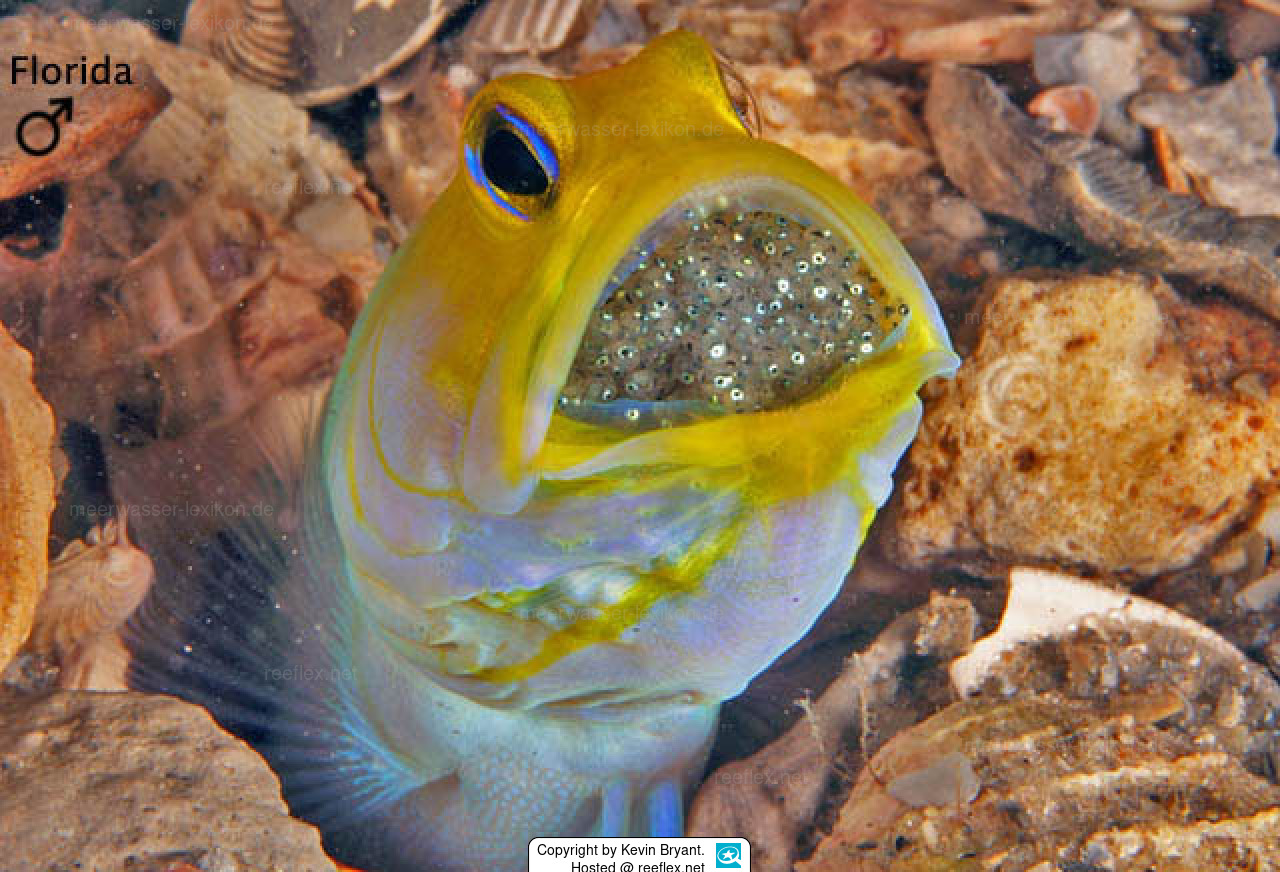Info
Opistognathus aurifrons, Jordan & Thompson, 1905
General information:
The family of jawfish (Opistognathidae), also known in this country as fountainfishes, belongs to the perch family (Percomorphaceae). It consists of three genera with around 80 species.
Fountain lobsters are found in the tropical Atlantic and Indo-Pacific, in the Gulf of California and on the Pacific coast of Central America from Mexico to Panama.
In the aquarium hobby, a variety of fountain fish are kept, some even bred very successfully, e.g. by Wolfgang Mai.
Pinefish live mainly in shallow water, mostly above 30 meters on sand and rubble. They build vertical burrows, which means that the keeper has to choose the bottom accordingly.
Only fine sand hardly works well, as the inner walls of the caves are attached with the help of stones, pieces of coral, mussel shells or other materials.
The substrate should also be at least 10 cm high, if not more.
Many species often live in small colonies in small territories, some others are solitary.
The caves are usually only left at very short distances, for example to catch food or to defend their territory. Usually you can only see their head peeking out of the burrow.
All burrowers are protogynous hermaphrodites that change sex from female to male in the course of their lives. They are permanent feeders (plankton)
Tank equipment:
The fountain dwellers are very skittish, so the aquarium should be secured with a cover.
Keeping Opistognathus aurifrons:
Basically not that difficult to keep if you do it right. They jump easily in the first few days, especially if they don't find the right substrate.
It is therefore advisable (information from Wolfgang Mai) to provide them with a cave where you can observe them. Wolfgang Mai uses a Plexi tube in which the fish is placed in the tank, directly on the prefabricated cave.
It usually stays there, with females and males living a few centimeters apart.
Wonderful behavior in pair care, because they should not be kept any other way. Adapt well during acclimatization!
These are mouthbrooders and have been successfully bred several times.
They have even been bred commercially in the USA and in Germany by Wolfgang Mai.
There are hardly any problems with the animals themselves, this only occurs when another fountain breeder species is added.
The fountain dweller here can certainly be established in a community tank, which is not possible with other species, such as Opistognathus castelnaui, as they are far too shy.
With all well-builders you should make sure that they get enough food, if necessary feed them with a food pipette.
Others don't dare to leave their cave and don't get enough food, which is not the purpose of the whole thing. Under no circumstances should you bring food into the cave, as the fish do not like this at all. They are too clean for that. The food will be removed immediately and not eaten.
Breeding information:
The male alone takes care of the brood by picking up the eggs after they are laid. If the male is too stressed by other tank inhabitants or by constant handling of the aquarium, the larvae will be eaten.
The larvae** hatch between the 7th and 9th day.
* The water temperature influences the number of fertilized eggs and the spawning period (with a difference of e.g. 1° C, the difference can be ± 2-3 days) and, in the case of gonochoristic (separate-sex) fish or shrimp, the sex. If the temperature is below the usual regional temperature, mainly female larvae will hatch from the clutch, above this temperature mainly male larvae will hatch. Furthermore, the aquarium conditions (e.g. light duration, density) can also influence the sex.
Synonyms:
Gnathypops aurifrons Jordan & Thompson, 1905
Opisthognathus aurifrons (Jordan & Thompson, 1905)
General information:
The family of jawfish (Opistognathidae), also known in this country as fountainfishes, belongs to the perch family (Percomorphaceae). It consists of three genera with around 80 species.
Fountain lobsters are found in the tropical Atlantic and Indo-Pacific, in the Gulf of California and on the Pacific coast of Central America from Mexico to Panama.
In the aquarium hobby, a variety of fountain fish are kept, some even bred very successfully, e.g. by Wolfgang Mai.
Pinefish live mainly in shallow water, mostly above 30 meters on sand and rubble. They build vertical burrows, which means that the keeper has to choose the bottom accordingly.
Only fine sand hardly works well, as the inner walls of the caves are attached with the help of stones, pieces of coral, mussel shells or other materials.
The substrate should also be at least 10 cm high, if not more.
Many species often live in small colonies in small territories, some others are solitary.
The caves are usually only left at very short distances, for example to catch food or to defend their territory. Usually you can only see their head peeking out of the burrow.
All burrowers are protogynous hermaphrodites that change sex from female to male in the course of their lives. They are permanent feeders (plankton)
Tank equipment:
The fountain dwellers are very skittish, so the aquarium should be secured with a cover.
Keeping Opistognathus aurifrons:
Basically not that difficult to keep if you do it right. They jump easily in the first few days, especially if they don't find the right substrate.
It is therefore advisable (information from Wolfgang Mai) to provide them with a cave where you can observe them. Wolfgang Mai uses a Plexi tube in which the fish is placed in the tank, directly on the prefabricated cave.
It usually stays there, with females and males living a few centimeters apart.
Wonderful behavior in pair care, because they should not be kept any other way. Adapt well during acclimatization!
These are mouthbrooders and have been successfully bred several times.
They have even been bred commercially in the USA and in Germany by Wolfgang Mai.
There are hardly any problems with the animals themselves, this only occurs when another fountain breeder species is added.
The fountain dweller here can certainly be established in a community tank, which is not possible with other species, such as Opistognathus castelnaui, as they are far too shy.
With all well-builders you should make sure that they get enough food, if necessary feed them with a food pipette.
Others don't dare to leave their cave and don't get enough food, which is not the purpose of the whole thing. Under no circumstances should you bring food into the cave, as the fish do not like this at all. They are too clean for that. The food will be removed immediately and not eaten.
Breeding information:
The male alone takes care of the brood by picking up the eggs after they are laid. If the male is too stressed by other tank inhabitants or by constant handling of the aquarium, the larvae will be eaten.
The larvae** hatch between the 7th and 9th day.
* The water temperature influences the number of fertilized eggs and the spawning period (with a difference of e.g. 1° C, the difference can be ± 2-3 days) and, in the case of gonochoristic (separate-sex) fish or shrimp, the sex. If the temperature is below the usual regional temperature, mainly female larvae will hatch from the clutch, above this temperature mainly male larvae will hatch. Furthermore, the aquarium conditions (e.g. light duration, density) can also influence the sex.
Synonyms:
Gnathypops aurifrons Jordan & Thompson, 1905
Opisthognathus aurifrons (Jordan & Thompson, 1905)







 Kevin Bryant, USA
Kevin Bryant, USA










































